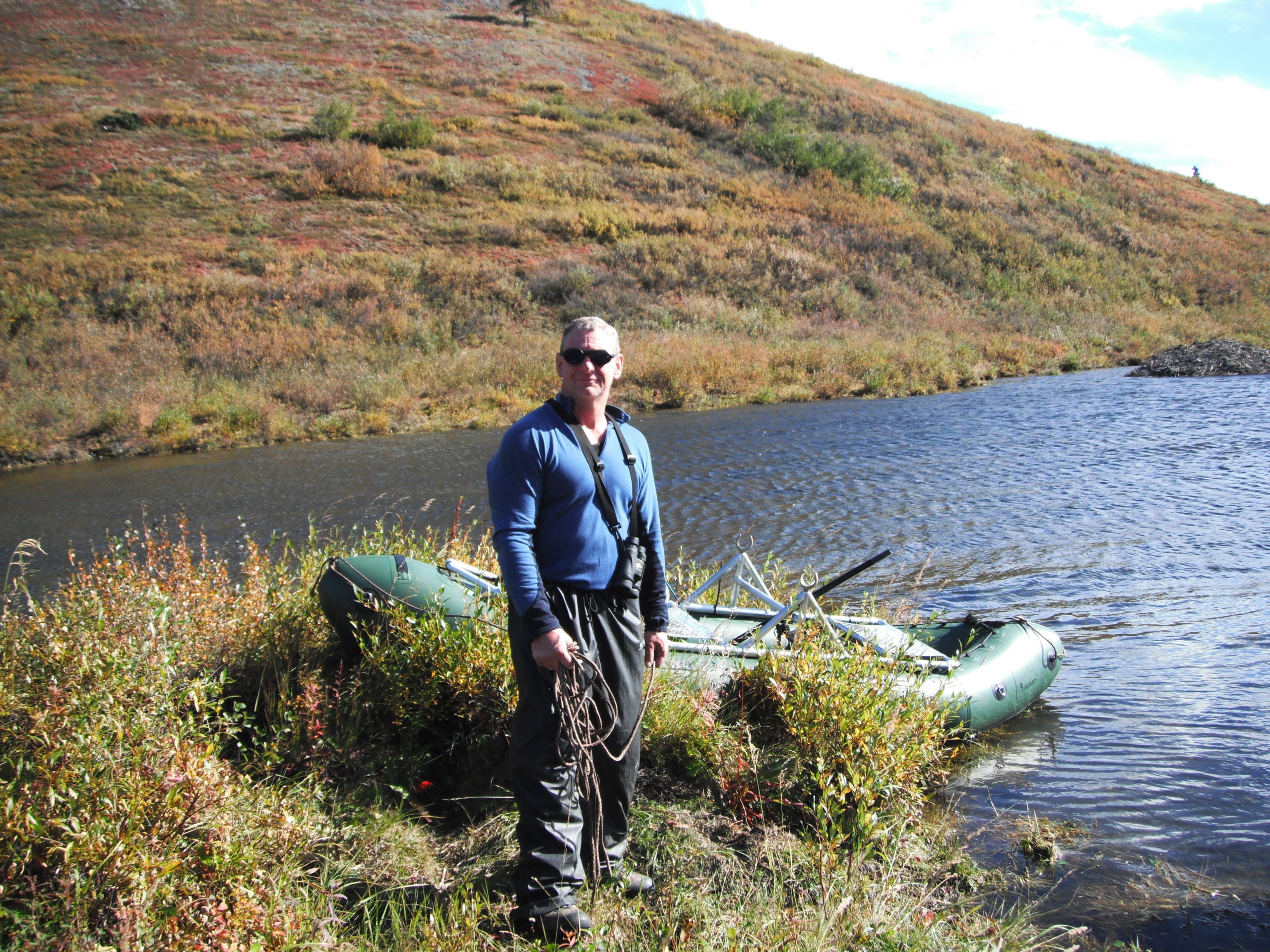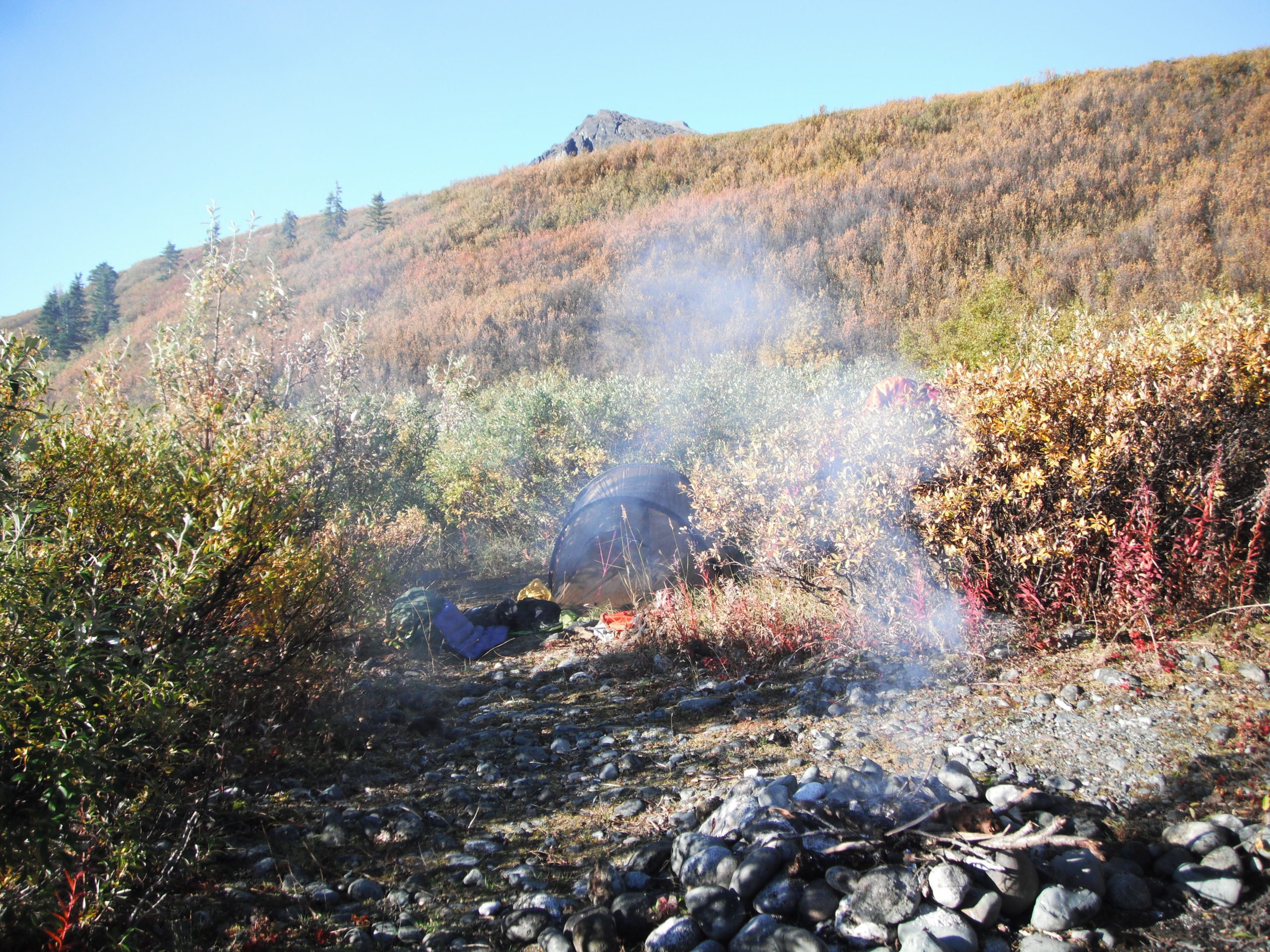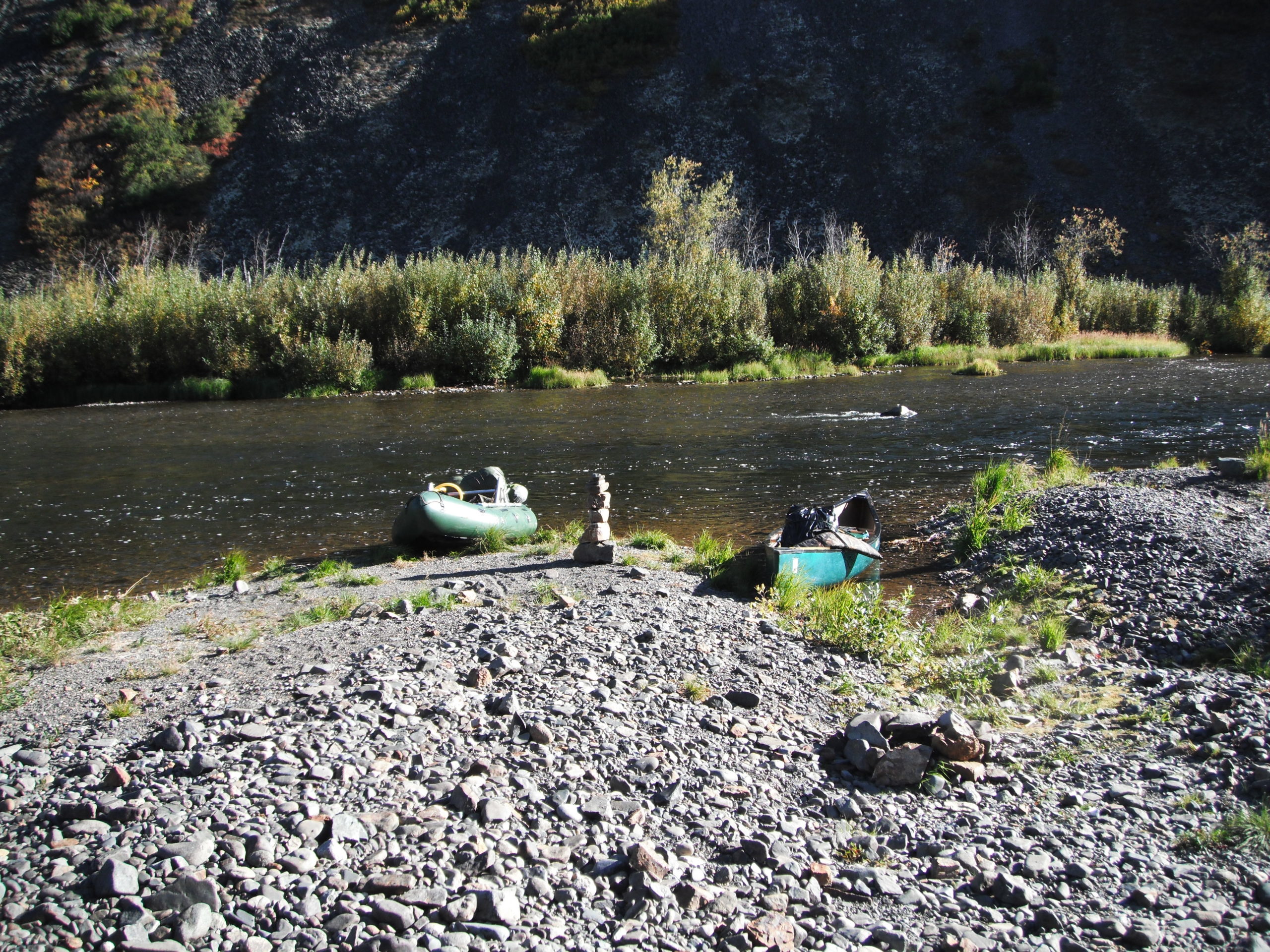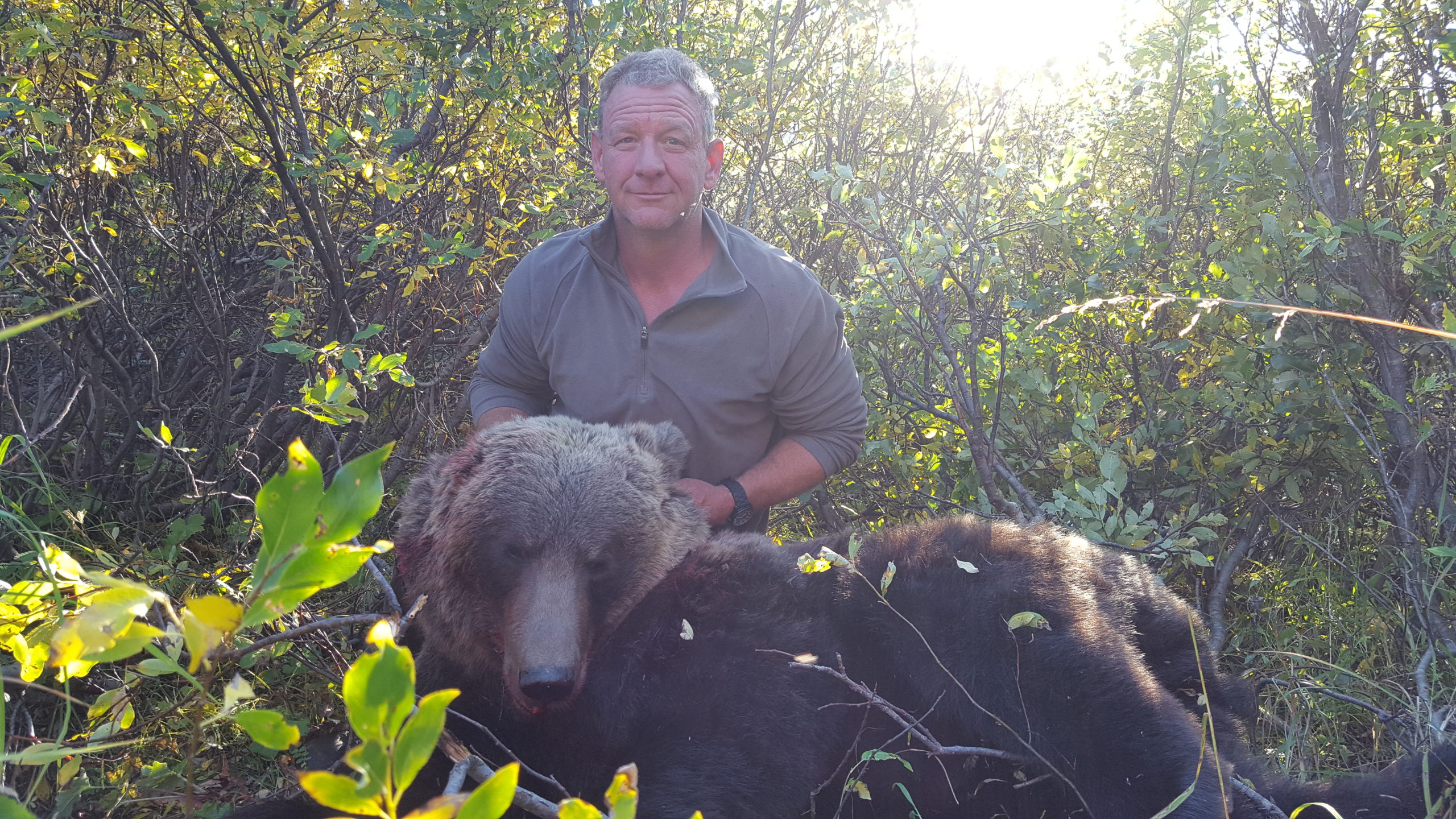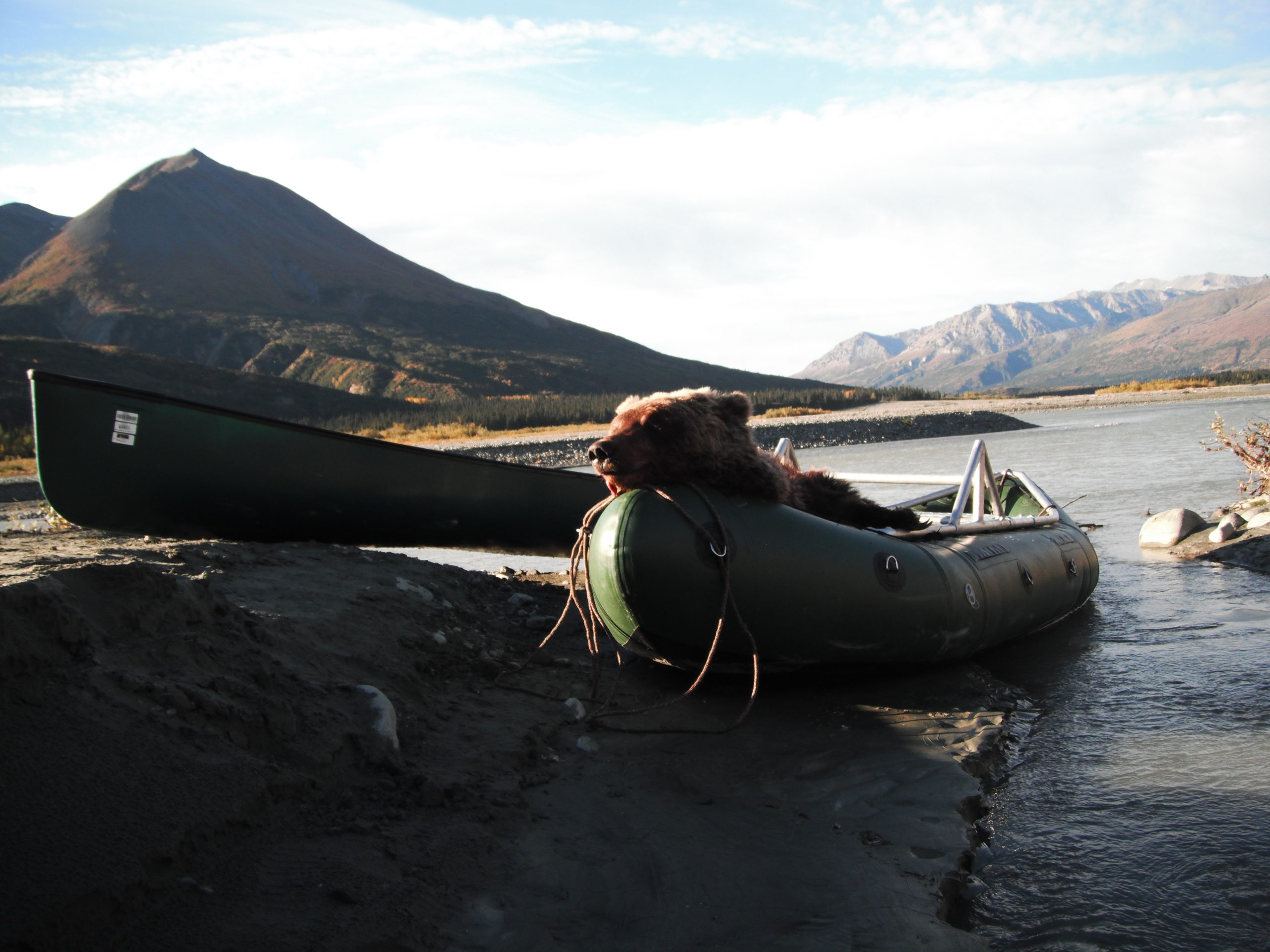The wind roared across the alpine lake as my dad carefully loaded his small raft with gear. Nearby, I did the same with my sixteen-foot canoe. Soon we would be paddling down a chain of high-country lakes, heading for a stream that served as the lake’s outlet. Once there, we would float twenty miles and carry our boats across one major portage before arriving at a roadside takeout. Longtime residents of The Great Land planned to hunt moose and caribou under a Federal subsistence permit for rural Alaskans.
This trip was a long time coming. I’d travelled this route before and had talked of hunting it with my father for years. I’ve hunted with him since I was old enough to tag along. Some of my early memories involve shooting big game rifles when I was so small that the recoil would actually knock me over. My dad gave up a lot of hunting opportunities by bringing four kids along; this was a great chance to explore some beautiful, remote country and do the type of float hunting he’d always talked about.
Finally, we were loaded and ready. However, a short test run quickly revealed that we were not going to make much progress into the headwind paddling two boats. After some experimentation, we landed and decided that the best approach would be to paddle my Old Town canoe together and simply tow Pop’s raft. We set out again, this time making slow but steady progress.
After two hours of steady work, we reached a familiar hunting area we call “the Notch.” Darkness was falling, so we decided to stop for the night. We quickly set up camp, using the tent to shelter from the wind for a couple of hours before turning in.
At first light the next morning, I climbed a nearby ridge to glass. Initially, I saw no movement, but soon I spotted a small bull moose feeding in the low, red brush on the side of a hill six hundred yards away. I could not tell if he was within the BLM designated hunting zone, a narrow strip that borders the lake, so did not pursue him. Eventually, he wandered off into a small bowl, out of sight.
Soon Pop joined me. We sat on the ridge, glassing and enjoying the beauty of the sunrise over the tundra. Suddenly, a light-colored spot a quarter-mile away caught my eye. Giving it a closer look with my binoculars, it resolved into a blonde sow grizzly with two half-grown cubs. What a sight they were, swaggering across the tundra. Twenty minutes later, they too had disappeared from view.
We spent a little more time trying to find where the bull had gone, hoping he had moved toward the lake and the legal hunting area. However, attempting to circle his hidey-hole only led to him slipping away across another ridge, now definitely not legal. Pop watched my effort to get around the bull. He later told me that five minutes after I crossed a patch of tundra on the opposite hill, the three bears appeared fifty yards above where I had just been!
The morning was now well underway; it was time to pull camp and hit the water. We paddled in the same configuration as before, the canoe pulling the raft into an unrelenting headwind. We stopped throughout the day and glassed but saw only a few caribou. Most of them were miles away, in areas that were illegal to hunt. One was legal, but on the opposite side of the lake and feeding away from us.
We reached an area where a rocky current flowed between two lakes, so we each got into a boat and paddled solo for a while. Since we had been unsuccessful at harvesting game, we consoled ourselves by catching and releasing arctic grayling, which readily took our small lures. One hole formed a large eddy; with just a few guiding strokes of the paddle, you could float its length, be carried back upriver, and repeat the trip, catching a fish with every pass.
Arriving at the next section of the lake, we rejoined the boats and continued paddling together. The wind whipped down this last lake with such intensity we could hardly make headway. We hugged the bank and tried to shelter behind a small point of land jutting out ahead of us, paddling for all we were worth. I looked up and saw a cow caribou peering over a rocky ridge above us in the middle of this. She walked away, a calf following her.
We landed, and I decided to climb the ridge to see more caribou on the other side. As I climbed, the alders seemed to grow more and more impenetrable, but finally, I arrived at the ridge’s rocky crest. I crept over, staying low to avoid sky lining myself. As I peeked over the ridge, I saw the cow and calf again; a young bull was standing near them. He was not a trophy by any means but would be tender meat for the long winter to come.
The bull saw me and moved down the shoreline. I found a spot to set up for a shot and waited for him to move into shorter brush. He must have sensed Pop because he milled around and did not move further down the lake, which would have left me without a safe shot. Finally, he came back towards me a little, stepped into an open spot, and stopped. The rifle roared, and the caribou went down.
I walked to him, making sure he wasn’t suffering, then headed for the boats to retrieve the butchering equipment. Pop and I walked back along a rutted moose trail and began skinning. Pop is a former journeyman butcher, and the caribou was not large, so in forty-five minutes, we were on our way back to the boats. I was saddened to harvest such a young animal but relieved to have started gathering the winter’s meat. I knew my wife would be happy I was bringing home a young bull, not some battle-scarred veteran of the tundra.
Meat stowed, we continued paddling together until the lakes ended and the river began. There, we each settled into our own craft. Gnats swarmed the river so thickly that they bounced off our eyes, forcing us to put on sunglasses to dodge the many shallow spots and barely submerged rocks.
After another mile and a half, we landed at an established campsite on the river’s left bank. We set up the tent, gathered firewood, and prepped caribou tenderloins for dinner. After a delicious meal, with the evening chill setting in solidly around our little paradise, it was time for bed.
Early morning found us climbing to a bench above the river, looking for moose. We saw several. Most were well out of reach, but one was only about three-quarters of a mile away. It appeared to be a cow, but we walked towards it, following a well-worn game trail.
I glanced behind us and saw two white spots through the brush. They were so far apart I thought they were the rump and mane of a caribou. Looking closer, I saw they were actually the antlers of a giant bull moose no more than a hundred yards away. The brush we were in was as high as our heads, but the bull must have heard us pass his bed.
After a whispered consultation, we agreed that if the bull was bedded in a lower brush patch, we had a good chance. We decided to split up. One of us would cut upwind of the bull so he would stand if bedded, and the other would stay crosswind of the bull and try to get a shot. Just as we made this decision, the antlers began to move away from us. He had been standing in brush even taller than he was.
There was no panic in his movements. He walked away. We followed as best we could, keeping his antlers in sight and hoping he would cross an area of lower brush where a shot would be possible. He knew what he was about, though, and we never saw more than the tips of his antlers. Disappointed, but elated to be so close to a truly huge bull, we returned to camp, ate some breakfast, and caught a few more grayling. Then we packed up and headed half a mile downstream, where we were forced to portage around a set of waterfalls.
The portage required us to carry our gear along a quarter-mile boardwalk to a beaver pond set in a cleft of the mountain. There we reloaded our boats and paddled across the pond until it looked as if we were going to paddle right off the mountain’s edge. Now the trail plunged steeply downhill for another quarter mile, runoff from recent rains trickling underfoot. We carefully carried our boats and gear to the bottom and prepared to launch into the rapids downstream.
These rapids vary from Class II to Class III depending on the water level, with numerous rocks to dodge. I had negotiated them in a kayak before, but this would be my first time in a canoe. The water was much higher than on the previous trip, and a strong crosswind kept blowing me out of my line. At one point, it lined me up with a huge rock I was trying to avoid. There was some water flowing over the top, so I paddled as hard as I could, straight ahead. I swept onto the rock, had a moment of doubt as the bow hung in the air ahead of me, then the bow dropped, and the boat was clear. A minute later, I looked back to see my dad follow the same line and splash over the rock, looking like he was born to raft whitewater.
Soon the river slowed and became a nice Class I float. We landed to take a look around. After a few minutes, we headed back to the boats. Just then, Pop noticed a brown spot moving on the mountainside across the river. “What is that?” he asked. On closer inspection, it turned out to be a large, lone bear. My dad had wanted to harvest a trophy grizzly for as long as I could remember; we hoped that this would be his chance! Quickly we made a plan. We would float closer, find a place to land, climb the hill upstream of the bear, and try to make a stalk. Unfortunately, we didn’t realize there were braids of the river between us and the mountain. We paddled downstream for a few hundred yards and found a place to land. I packed some essentials in case we had to stay out overnight.
We headed off through dense alders cut by beaver trails, trying to move rapidly through the spiderweb of branches. At the first river braid, I doffed my boots, rolled up my pants, and crossed. Pop plunged through. Then we came to the next braid. And the next. Finally, we were at the foot of the mountain. “The mountain” was actually the wall of the river canyon. On top was a sub-Arctic plateau. It was very steep going, but we fought our way to the top using willows and alders for handholds. A few minutes of glassing and there was the bear, four hundred yards away and feeding busily. Beyond him were two caribou, one of them a beautiful bull.
The grizzly was feeding uphill, so we decided to circle and intercept him. Every few minutes, we stopped to check the bear’s direction of travel. Suddenly, to our dismay, he turned, fed back the way he came, and disappeared. Disappointed, we decided to work our way to the little gully where we had first seen the bear. We thought he might have returned to continue feeding. As we walked, pushing through the chest-high brush with rifles at the ready, I felt oddly exposed. We were certainly in the bear’s habitat, not our own.
At the edge of the bear’s gully, we stopped and looked around carefully. Nothing. Not wanting to give up hope, I suggested we circle the gully’s head and look from the other side. As I turned to go, my dad hissed, “I see him!”. He pointed out the bears head, peering from a thicket on the other side of the gully. I had never seen Pop rattled during a hunt, but he was as excited as a new hunter chasing his first big game. It was then I realized what a dream this was for him.
I dropped my pack, and we moved forward a little for a clear, offhand shot. The bear could plainly see us now. He stood up on his hind legs, looking. I waited for Pop to shoot, but he didn’t. The plan was for both of us to shoot, maximizing the odds of a quick, clean kill. The bear dropped back to all fours, concealing his vitals. “Next time he stands up, shoot him,” I said quietly. “Are we really doing this?” Pop hesitated. “If you’re comfortable with the shot,” I answered. “I’d rather be closer,” he replied, though we were within a hundred yards. This coming from the man who taught me to shoot and who is one of the finest field shots I know. It was a great experience to see him realizing a dream he wanted so badly it unnerved him.
Just downhill and to the left of the bear was a small patch of green grass; below that was an alder jungle running all the way to the river. Behind the bear were endless willows, chest-high on a man. “Let’s wait until he crosses the grass,” said Pop, as the bear continued to stand and stare at us for five seconds at a time. “He’s not going to cross the grass; he’s going to turn, go into the willows behind him, and be gone,” I answered. Still, Pop did not shoot.
Suddenly, the bear seemed to make up his mind and headed downhill directly across the grass patch. “Now”, said Pop, and we both fired. The impact of four hundred and fifty grains of lead and copper sent the bear rolling. Regaining his feet, he disappeared into the alder jungle before either of us could get off a follow-up shot. We were ecstatic but cautious, knowing the legendary toughness of grizzlies and the risks of following up a wounded one. Pop thought he’d seen the bear start to roll again as it reached the edge of the alders; we had high hopes to find him immediately.
A minute later, we were standing where we thought the bear had hit the alders, with no bear in sight. We climbed about fifteen yards to where the bear had been at the shot. We found blood, but we could not see the bear from there either. Pop was worried, not at the thought of following up a wounded bear in the brush, but at the idea that we might never find it in the dense, dark tangle of leaves and branches. I walked back to retrieve the pack. As I carried it towards Pop, I noticed the sun glint oddly on a patch of light brown in the edge of the brush just beyond him. I walked closer. There was the bear, unmoving, its natural camouflage, making it all but invisible from our previous vantage points.
The relief was palpable. We took the requisite photos quickly, as darkness was fast approaching, and began to skin the bear. State regulations require salvaging the hide and skull. It was nearly dark by the time we were done skinning, but we decided to head back to the boats where hot food and warm sleeping bags awaited. With Pop carrying our gear, and the hide and skull strapped to my pack frame, we set out. We found a much faster route down the mountain, now that we didn’t have to play the wind. Then we set out to work our way upstream to the boats. The dense alders lining the river forced us to wade much of the time, but eventually, we made it.
We rigged two tarp shelters, using beaver trails to make our beds since they were the only flat spots around. The night was cold and clear, with the stars incredibly bright and seeming to dance in the sky. The aurora appeared and put on a brilliant show. Finally, I tore myself away from the beauty and drifted off to sleep. We slept late the next morning and awoke to a thick layer of frost. After breakfast, we floated down the river to our new route up and down the mountain. I climbed up to the carcass and retrieved a well-chilled hindquarter. The meat of this interior Alaska “berry bear” later proved to be fine eating, despite the bad reputation of grizzly meat.
The rest of the day was spent floating and paddling to the takeout. We kept our eyes open for a bull moose but didn’t find one. Not to worry, there was plenty of time left to write that story. We arrived at the takeout exhausted but happy. All in all, this was a trip and a hunt that I’ll treasure forever, one where I learned many lessons and got to help my dad fulfill a lifelong dream. And while it certainly didn’t make his aim any less deadly, I’ll always smile remembering the day my dad got “buck fever.”


